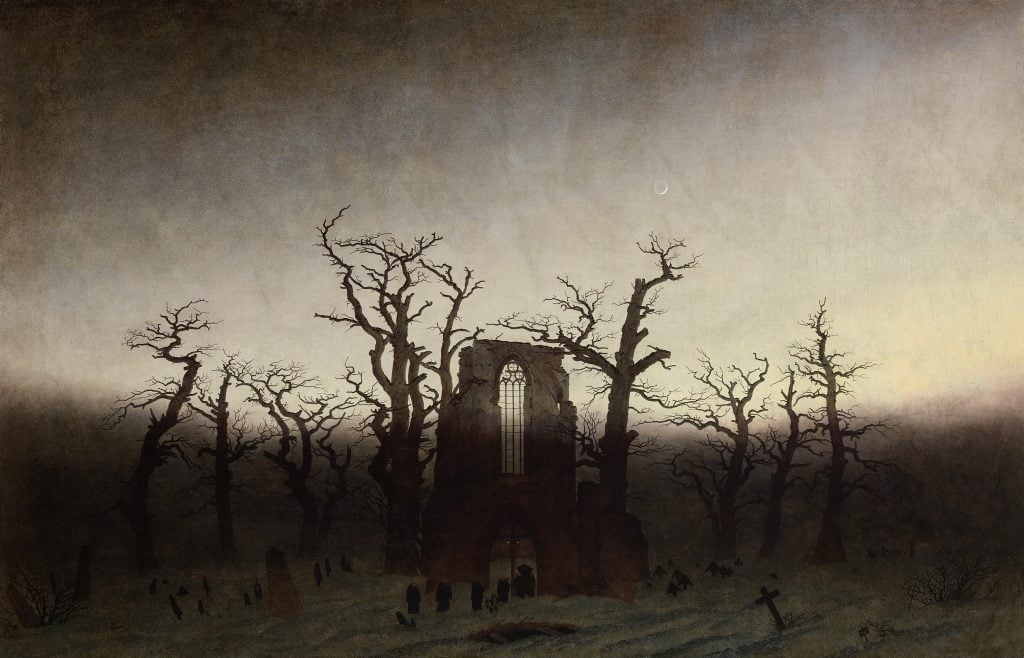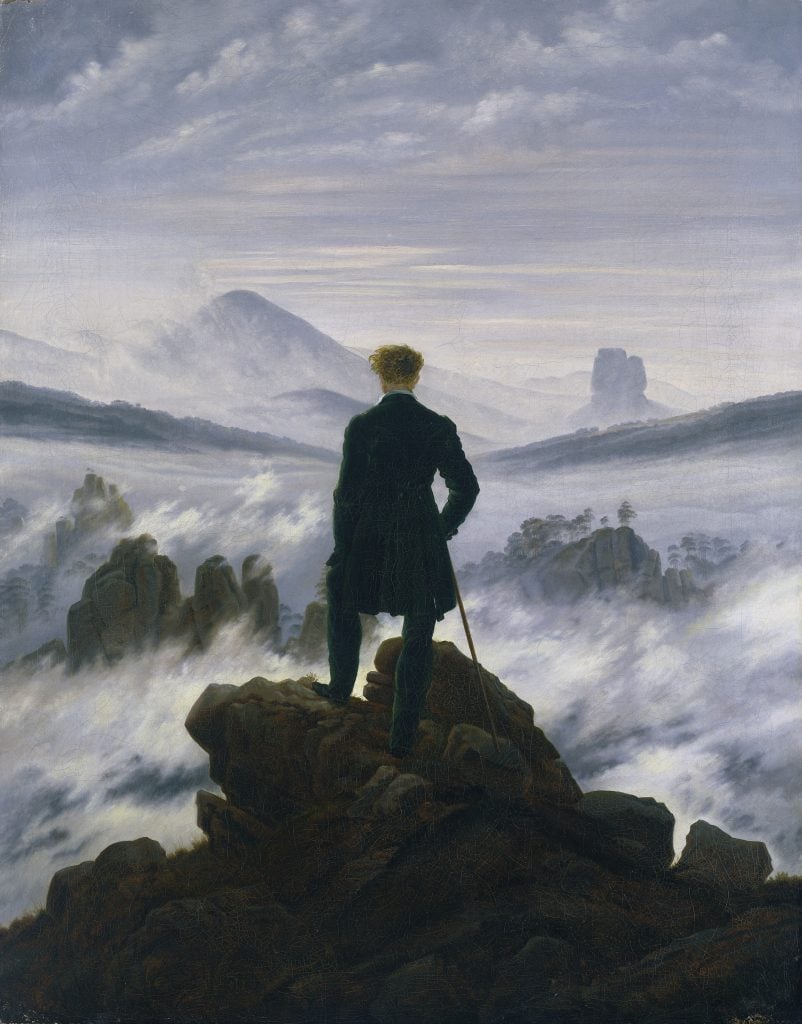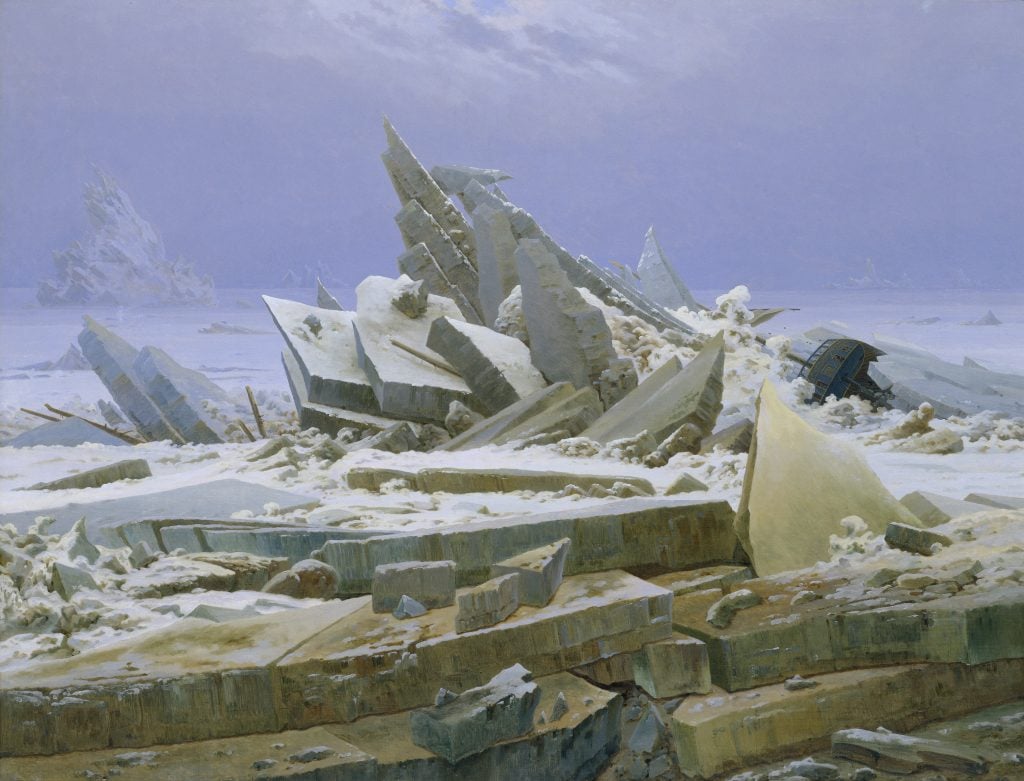Art History
Experience Gothic Melancholy With These Key Works by Caspar David Friedrich
The icon of Romanticism is being celebrated with major shows, marking 250 years since his birth.

The icon of Romanticism is being celebrated with major shows, marking 250 years since his birth.

Devorah Lauter

An icon of Romanticism, Caspar David Friedrich resonates with audiences for his mystic landscapes that exalt nature, yet the painter’s legacy has been bumpy. Friedrich died in 1840 in Dresden, impoverished and mostly forgotten, only to be idolized later in wartime Germany.
Today, he is being celebrated with major exhibitions in German cities and New York’s Metropolitan Museum of Art, marking 250 years since his birth in 1774.
It wasn’t until key exhibits in 1959 and the 1970s that a new appreciation emerged for Friedrich’s imagined scenes of Gothic melancholy, with some art historians even arguing he was a precursor to modernism—an attribution that stuck.
“The artist should paint not only what he has in front of him, but also what he sees inside himself,” he famously said. Here are some key works illustrating what he meant.
The Monk by the Sea (1808–10) and The Abbey in the Oakwood (1809–10)

Caspar David Friedrich, Monk by the Sea, (1808-10). State Museums in Berlin, National Gallery / Photographer: Andres Kilger
Friedrich wanted these two radical paintings to be exhibited together. They were painted on canvas from the same roll and it was a coupling technique he would repeat. The Monk by the Sea is one of the artist’s most astounding works, and art historian Robert Rosenblum maintained it was a precursor to Abstraction, in his 1975 book “Modern Painting and the Northern Romantic Tradition: Friedrich to Rothko.”
He pointed to Friedrich’s minimalist portrayal of a lone figure by the sea, comparing it to Mark Rothko’s atmospheric, abstract canvases.
While The Monk by the Sea considers the limits of individual understanding of “the unfathomable Beyond,” as the artist wrote, when it came to The Abbey in the Oakwood, he said: “I’m attempting to depict the mystery of the grave and of the future. That which is perceived and recognized only through faith, and will always remain a mystery to the finite knowledge of human beings: (to a certain extent, that which I want to represent, and the way I want to present it, remain a mystery to me as well.).”
Both pieces were purchased by the Prussian King Friedrich Wilhelm III, helping propel the artist into a period of professional success.
Wanderer above the Sea of Fog (1818)

Caspar David Friedrich, Wanderer Above the Sea of Fog, (c. 1817). Permanent loan from the Stiftung Hamburger Kunstsammlungen © SHK / Hamburger Kunsthalle / bpk. Photo: Elke Walford
Dubbed the “Mona Lisa of Hamburg,” Wanderer above the Sea Fog is Friedrich’s most famous painting, a quintessential example of Romanticism and its close friend, wanderlust. Located in the Hamburger Kunsthalle collection, it is referenced by contemporary artists and even video game avatars.
It features a centrally framed, large figure from the back, known as Rückenfigur in German, who stands in contemplation above the mist on a craggy mountaintop. Friedrich’s similarly red hair has led many to interpret the painting as a self-portrait, while inviting the viewer to put themselves in the faceless figure’s place, to join in self-reflection.
“Close your eyes,” Friedrich said to a student painter, “so that your picture will first appear before your mind’s eye. Then bring to the light of day what you first saw in the inner darkness, and let it be reflected back into the minds of others.”
Friedrich’s biographer, Florian Illies, wonders if the artist preferred the Rückenfigur, simply because he was not skilled at painting faces. Landscapes were certainly Friedrich’s subject of choice, and he painted them from detailed sketches which he compiled into imagined places in his Dresden studio. The surroundings seen here were painted from drawings Friedrich made of the Elbe Sandston Mountains in Saxony and Bohemia, where he hiked with painter Georg Friedrich Kersting.
The Ice Sea (1823-24)

Caspar David Friedrich, The Sea of Ice (1823-24). Hamburger Kunsthalle / bpk . Photo: Elke Walford
In this work Friedrich shows the power of nature over the hubris of man. A ship can be seen sinking between the ice, and Friedrich painted it as news spread of William Edward Parry’s discovery of the Northwest Passage in around 1819.
It also evokes the artist’s tragic relationship to icy waters. When he was a child, he fell through the ice while skating, and his brother rushed to save him and passed away as a result. In spite of its emotiveness, thw work was not well-received, and didn’t sell while Friedrich was alive. Fellow artist David d’Angers admired it, inspiring his famous descriptive: “the tragedy of landscape.”